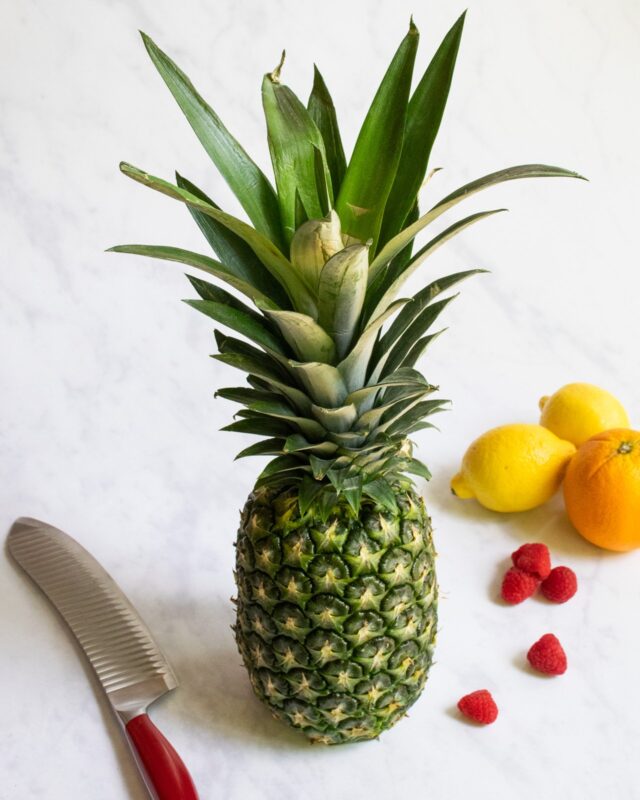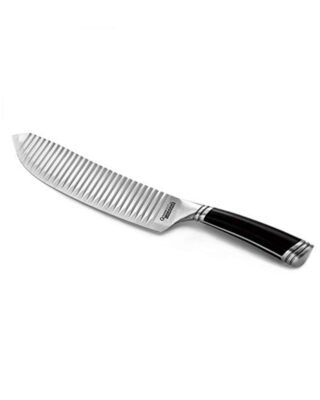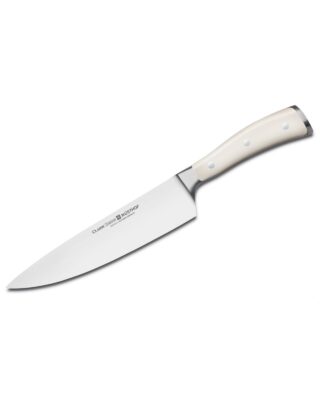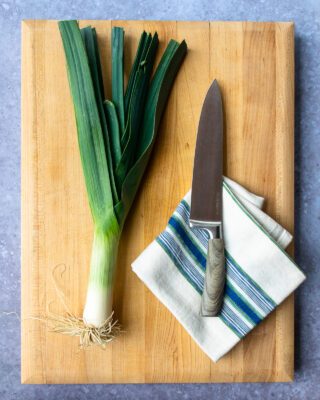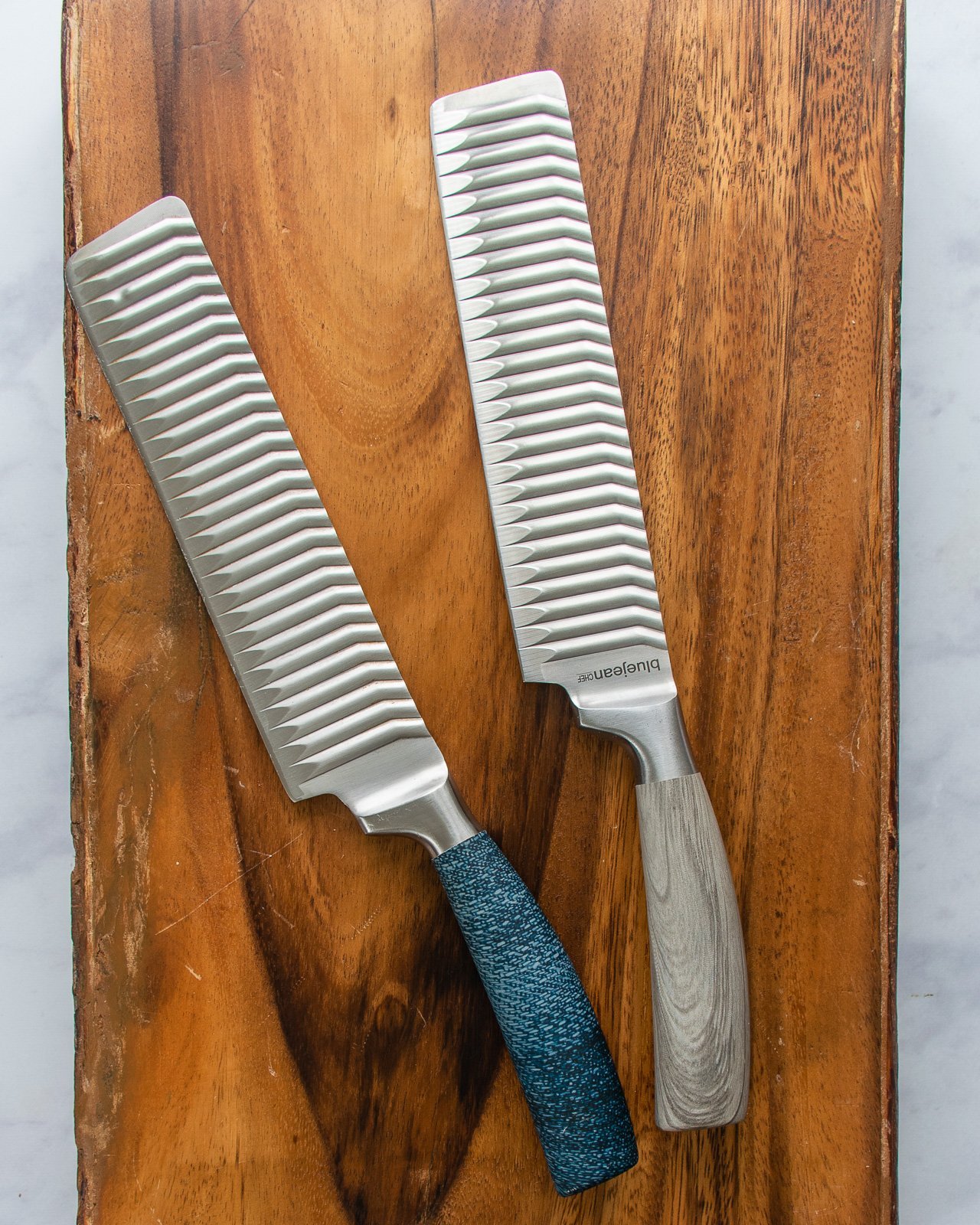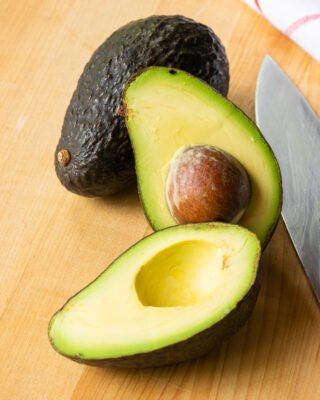Pineapple has long been the symbol of hospitality. This may have come from the tradition of sea captains returning home to New England from the Caribbean who would stake a pineapple in front of their homes to let people know they were home and ready for visitors. Despite is symbolic meaning, a pineapple is not really very inviting – it’s not inherently obvious how to go about tackling the fruit that reassembles a pine cone with a lot of sharp points on the leaves and on the body of the fruit itself. A pineapple is actually made up of many flowers and individual fruitlets and each one is marked with a sharp, prickly “eye”. It’s knowing how to get around and remove these “eyes” that is important. Here’s what you need to know.
How to choose a pineapple
Pineapples are in season from March through June, but they are available in grocery stores year round and have become the second most popular fruit in the USA (bananas are still #1). When picking a pineapple, choose one that is heavy for its size. There should be no bruises or darkened “eyes” and the stem end should have a sweet smell, rather than a musty or fermented smell. Some say that pulling on one of the leaves to see how easily it is released from the pineapple is a sign that it is ripe. While I believe loose leaves do indicate the fruit is ripe, it doesn’t mean that pineapples without loose leaves can’t be just as delicious so I don’t rely on that technique solely when picking a pineapple.
How to store the pineapple
The first thing you want to do when you bring a pineapple home (if you’re not going to eat it right away), is to remove the leaves from the base. Hold the pineapple on the countertop with the leaves hanging over the edge, grab the leaves with one hand while you hold the fruit with the other and break the leaves off by pushing them down. The leaves will continue to draw energy and food from the fruit so breaking them off helps keep all the nutrients and sugars intact in the part of the pineapple that you will eat. If you’re going to eat the pineapple within a day or so, leave it out on the countertop. Otherwise, you can refrigerate pineapple for up to a week.
Here’s how you cut a pineapple
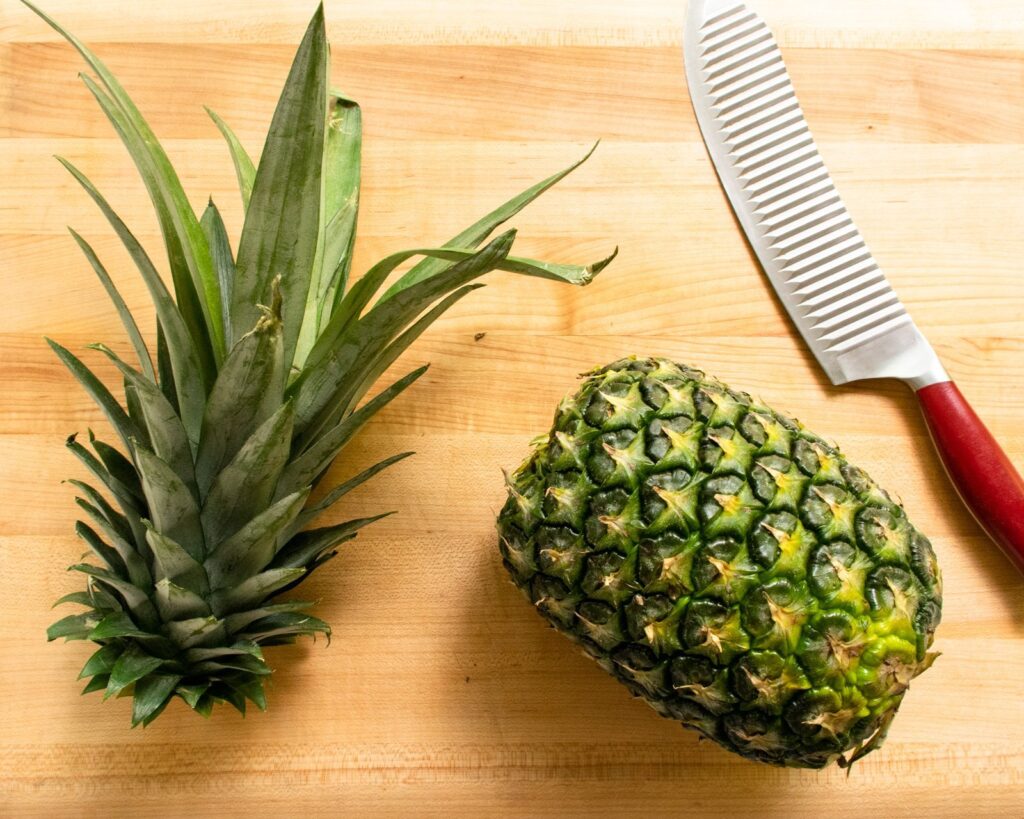
Remove the leaves from the pineapple.
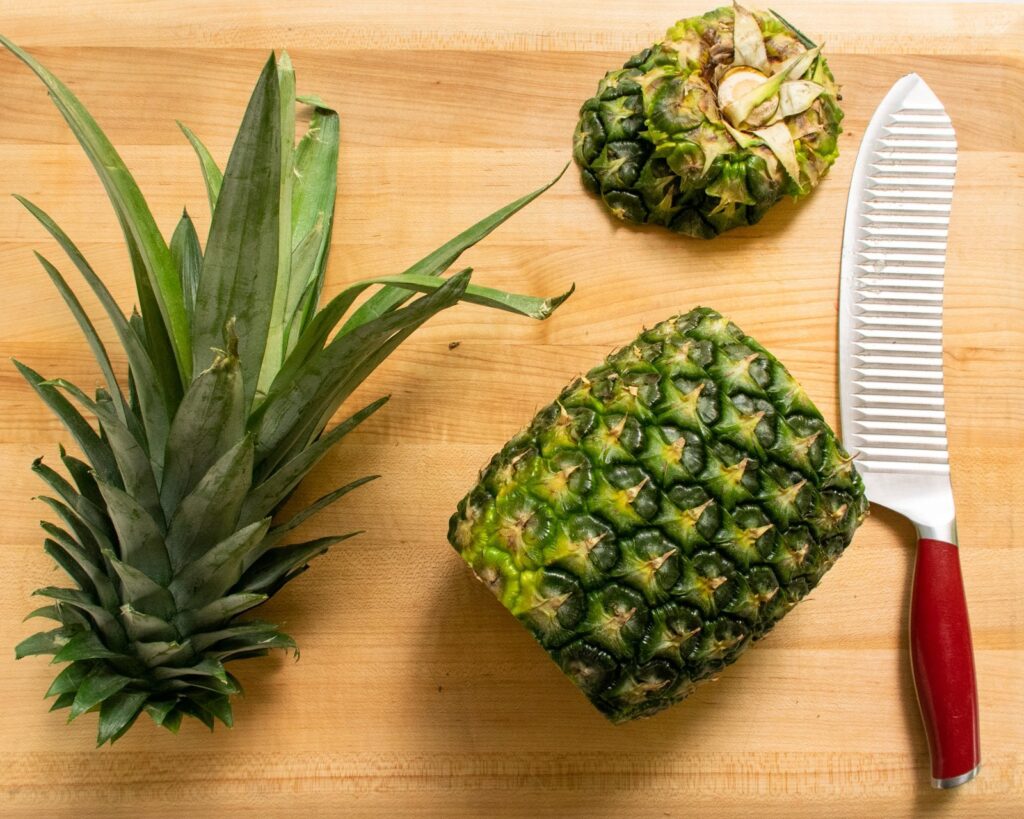
Cut off both ends of the pineapple so that you have two flat surfaces.
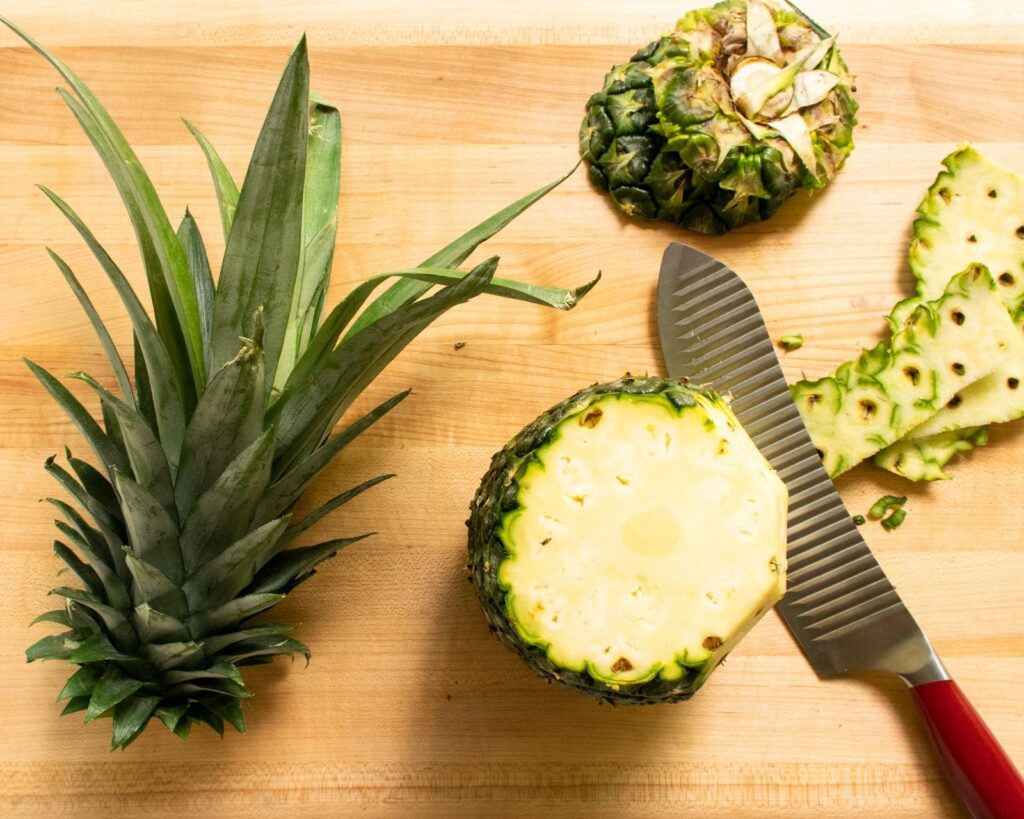
Slice down the sides of the pineapple, curving the knife with the shape of the fruit to cut off the tough outer peel.
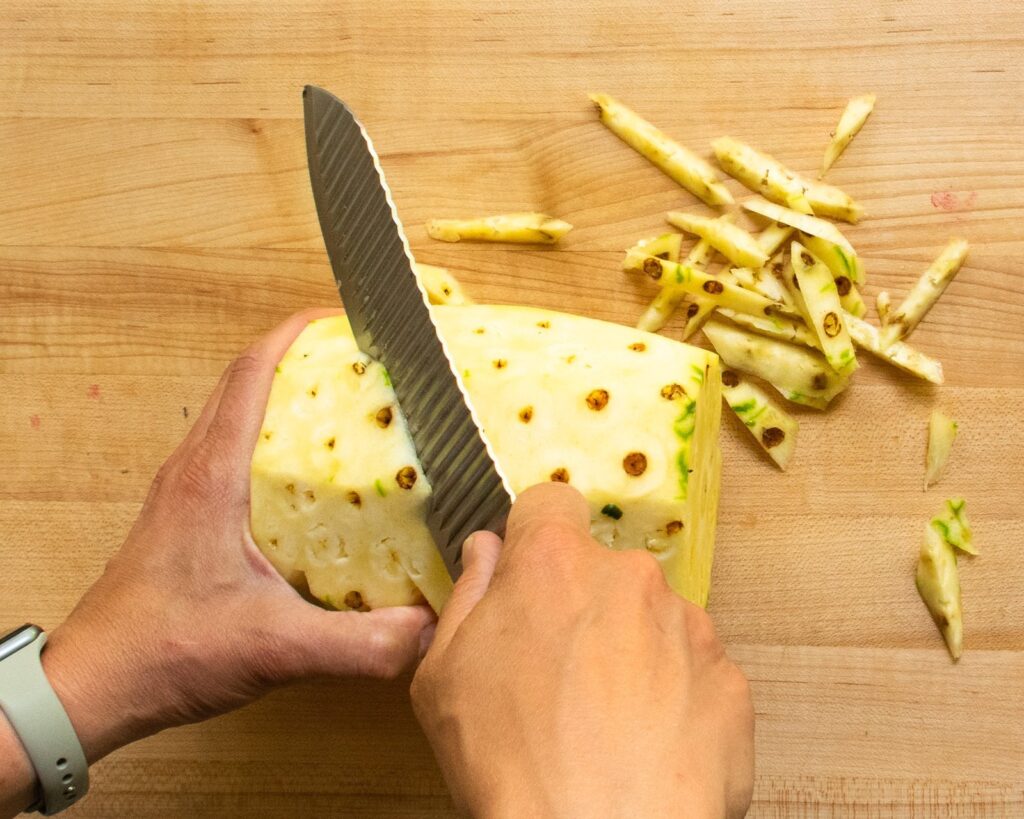
The “eyes” of the pineapple will appear in diagonal lines across the pineapple. By slicing a “V” around them, you can remove several at one time. Do this all the way around the fruit. It is a little labor-intensive, but it creates a pretty pattern in the finished slices of pineapple as well as removes the “eyes”.
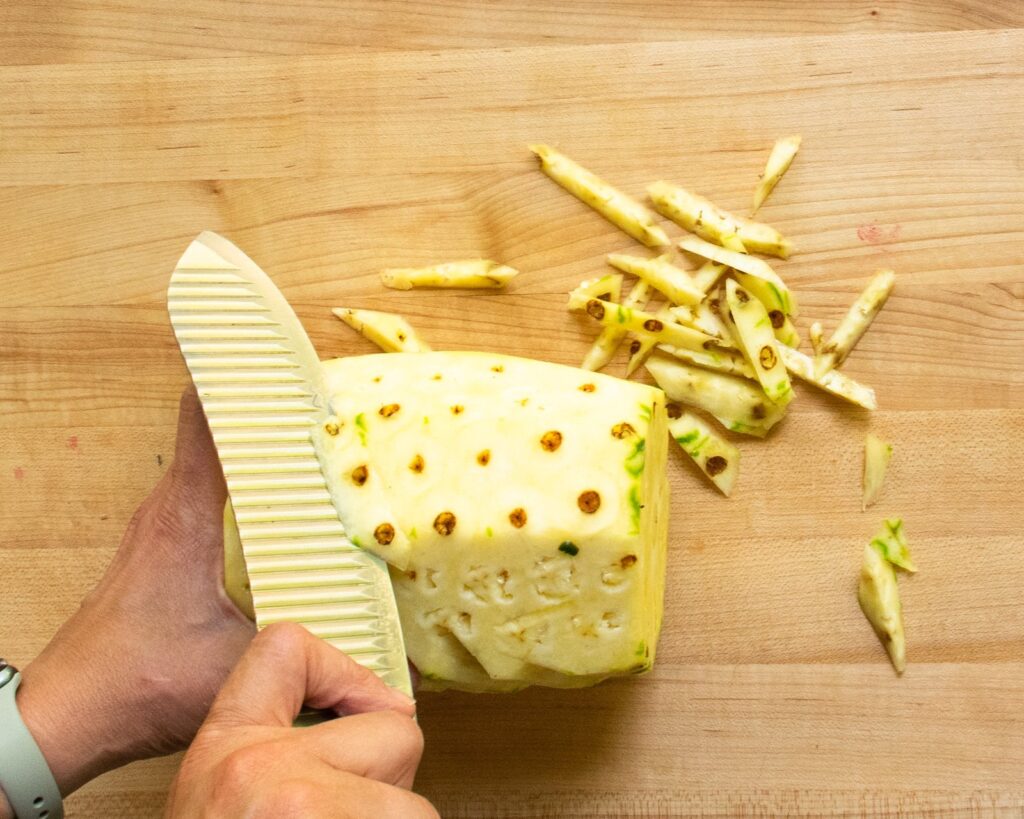
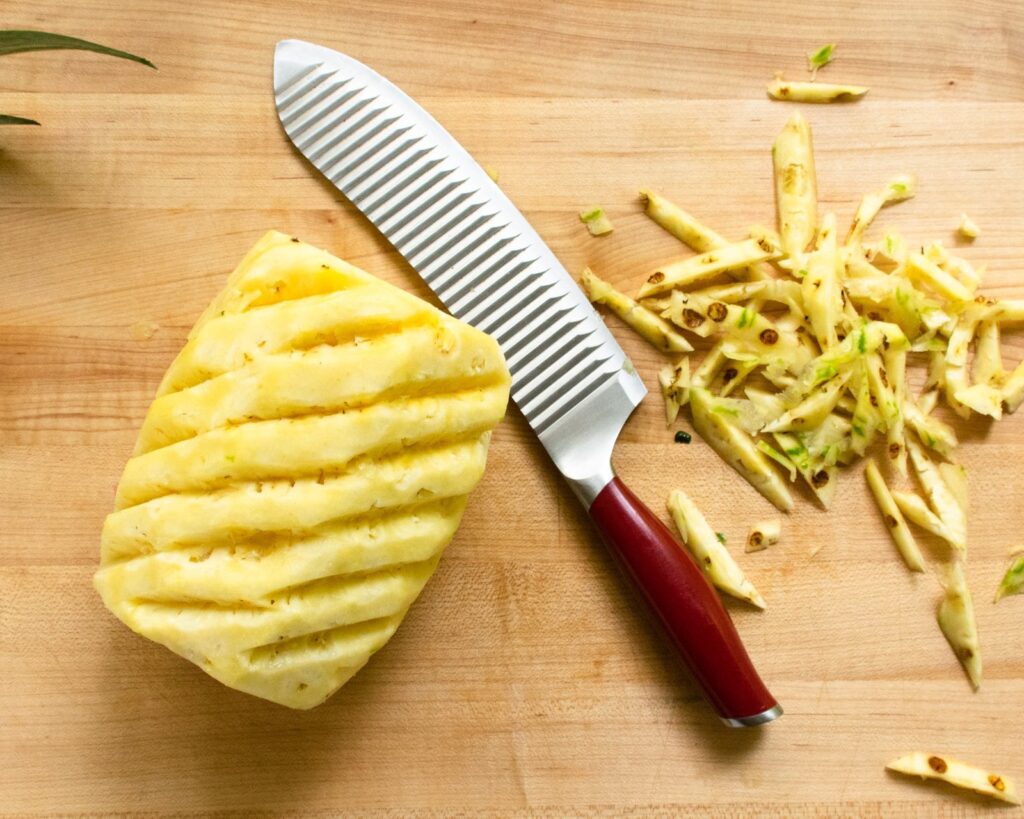
Once the “eye”s have been removed, return the pineapple to one of the flat ends and slice it into quarters through the core.
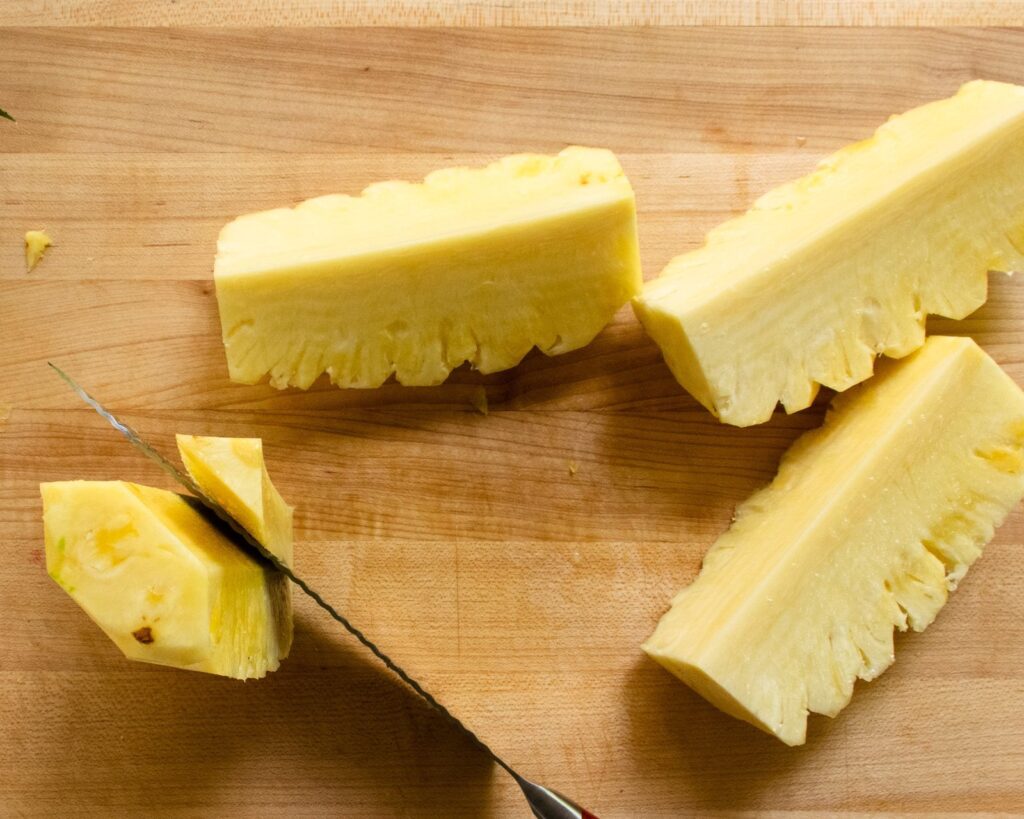
Remove the core from each quarter of pineapple by simply putting the pineapple back on its flat side and slicing off the inner triangle.
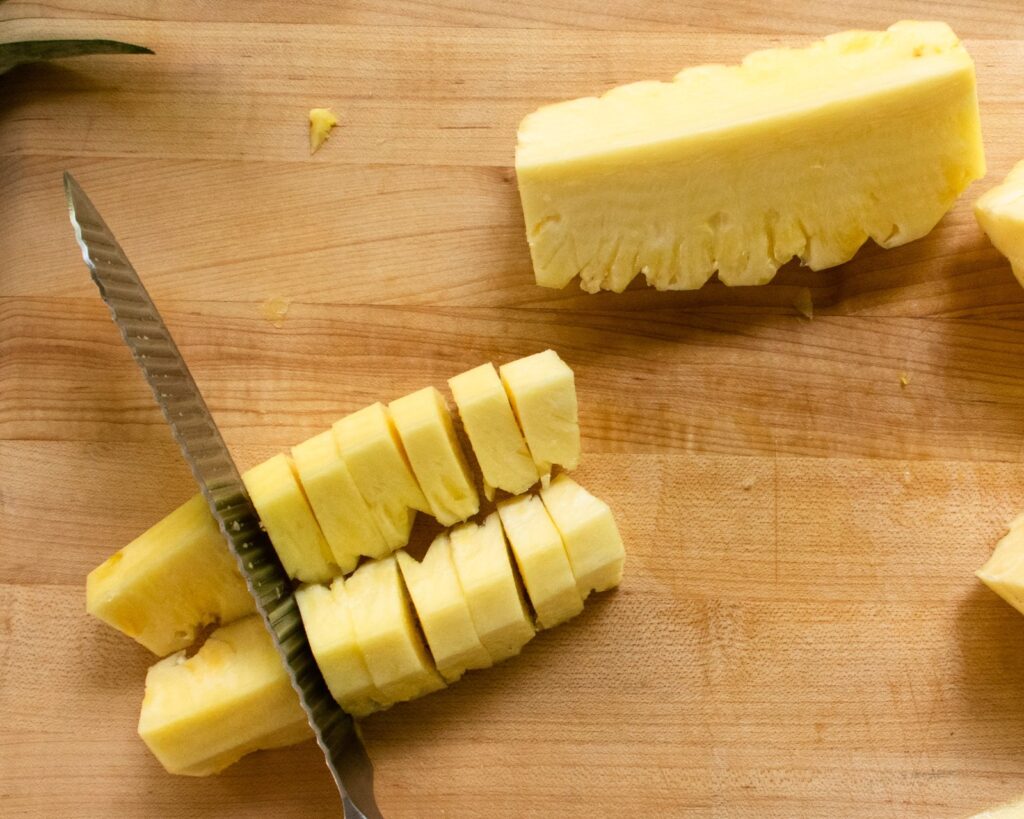
Slice each cored quarter into pieces and you’re done!
Quick Notes:
- A pineapple is made up of many flowers and individual fruitlets, each marked with an ‘eye’.
- Pineapples are in season from March through June, but available all year round.
- Choose pineapples that are heavy for their size, have no bruises or darkened ‘eyes’ and have a sweet smell at stem end (no musty or fermented smell)
- Store a pineapple at room temperature on the counter if eating within a day or so. Otherwise, refrigerate for up to a week.
- The steps to cutting a pineapple are:
- Remove the crown and the base first
- Slice away the tough skin
- Carve out eyes
- Cut the pineapple into quarters through the core
- Remove the core from each quarter
- Slice the cored quarter into pieces
